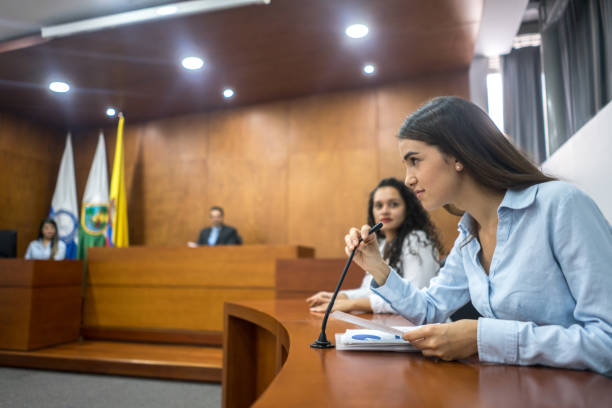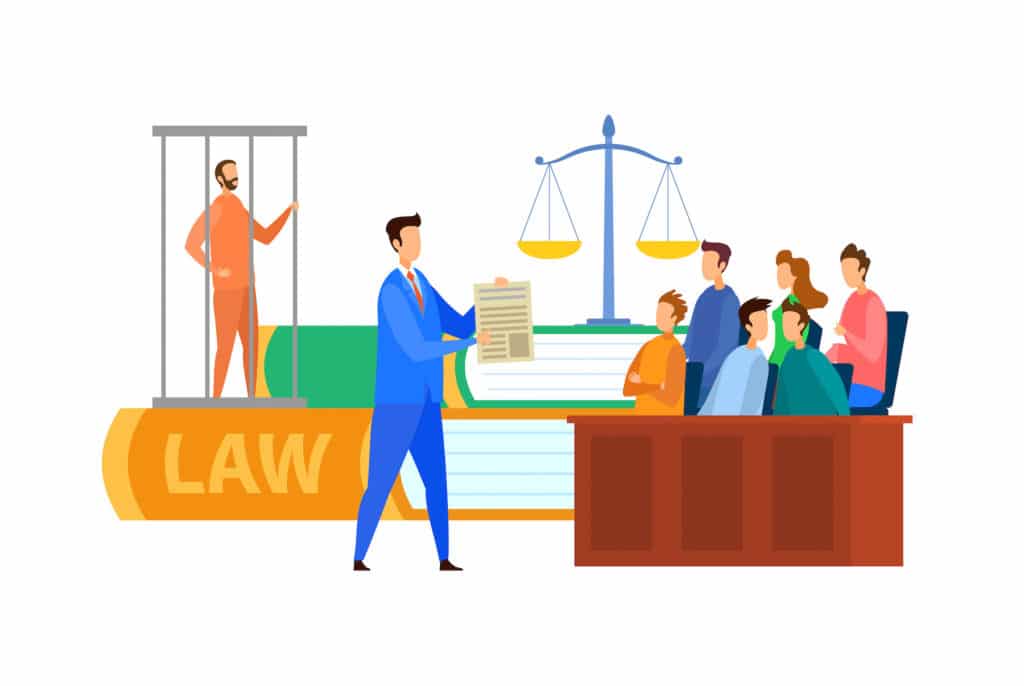Important Skills for Crafting Convincing Trial Presentations: A Comprehensive Guide
Navigating the Intricacies of Trial Presentations: Tips for Seamless Delivery and Compelling Debates
In the realm of legal process, the art of trial presentation stands as a critical component of success. The complexities inherent in trial discussions need a fragile equilibrium of ability, approach, and finesse.

Comprehending Trial Objectives
To successfully browse a test, it is essential to have a clear understanding of the objectives that require to be achieved. Before entering the court room, lawful teams need to define their goals and preferred results. These purposes act as assisting principles throughout the trial, shaping strategies and influencing decision-making processes.
Recognizing trial objectives entails a comprehensive evaluation of the situation, legal precedents, and the client's ideal interests. Trial Presentations. It needs a precise assessment of the truths, determining crucial issues, and preparing for prospective difficulties. By establishing quantifiable and specific objectives, lawyers can tailor their presentations and disagreements to line up with the preferred outcomes
Additionally, a clear grip of test goals allows legal teams to focus on evidence, witnesses, and legal disagreements efficiently. It permits for the development of a systematic story that reverberates with the judge and jury, enhancing the overall case discussion.

Organizing Proof Successfully
Having a clear understanding of test goals lays the foundation for organizing proof successfully in legal proceedings - Trial Presentations. By aligning the discussion of proof with the preferred results of the test, lawful teams can strengthen their debates and boost their persuasiveness. One vital element of organizing proof is classification. Grouping proof based on themes or significance to particular legal components can aid simplify the presentation and make complex details a lot more digestible for the court or jury.
Another crucial element in organizing proof effectively is establishing a rational flow. Providing evidence in a meaningful and sequential manner can aid build an engaging story that supports the lawful arguments being made. Furthermore, using visual help such as graphs, timelines, or charts can even more boost the organization of evidence and help in clarifying complicated relationships or sequences of occasions.
Furthermore, making sure that all proof presented is acceptable and appropriate to the situation is crucial. Inadmissible or unimportant proof can diminish the strength of the argument and potentially hurt the credibility of the presenting celebration. A thorough testimonial and option procedure need to be undertaken to include only the most impactful and legally sound proof in the test discussion.
Crafting Convincing Stories
Crafting engaging stories plays a pivotal duty in providing persuasive debates during lawful procedures. When creating a narrative for a test discussion, it is important to develop a clear story that highlights vital points and attaches them in a meaningful fashion. By weaving together proof, testament, and legal arguments right into a convincing and natural narrative, lawful professionals can successfully advocate for their customers and increase the probability of a favorable outcome in the court room.
Mastering Visual Help
Reliable use visual help check out this site is key to improving the influence and clarity of trial discussions. Aesthetic aids, when used purposefully, have the power to simplify intricate details, strengthen essential points, and leave a long-term impression on the discretionary. To understand visual aids in trial discussions, it is critical to make certain that they are clear, concise, and appropriate to the debates being made.
When integrating aesthetic help, such as graphes, timelines, photos, or charts, into a trial presentation, it is necessary to maintain them aesthetically appealing yet specialist. The visuals should complement the verbal arguments, offering a visual representation of the info being gone over without frustrating the target market with unneeded information.
Additionally, exercising with the aesthetic aids in advance is critical to make certain a smooth distribution throughout the test. Familiarizing oneself with the material, changes, and timings of each visual aid can help keep the circulation of the discussion and stop technical glitches that may emerge.
Supplying Impactful Closing Debates
An engaging closing argument acts as the conclusion of a trial presentation, enveloping the core story and convincing the judge and court in the direction of a positive decision. To deliver an impactful closing debate, it is critical to succinctly evaluate bottom lines, highlight the toughness of your situation, and deal with any weak points in a calculated manner. Begin by outlining the major disagreements that support your customer's position, stressing why the proof presented throughout the test supports your story. It is important to produce a sense of cohesion and clarity, guiding the judge and her latest blog court towards the wanted final thought.
Moreover, incorporating emotional charm can additionally reinforce your closing debate. Ultimately, a well-crafted closing argument ought to leave a long lasting perception, engaging the court and court try these out to rule in your customer's support.
Conclusion
To conclude, mastering trial presentations entails comprehending goals, organizing evidence, crafting narratives, using visual aids, and delivering impactful closing debates. By applying these strategies effectively, lawyers can offer their instance flawlessly and make engaging debates in the court. It is vital to browse the complexities of trial presentations with accuracy and ability to accomplish success in legal process.
By lining up the discussion of evidence with the desired outcomes of the test, lawful teams can strengthen their debates and boost their persuasiveness (Trial Presentations). To grasp visual help in test presentations, it is essential to ensure that they are clear, concise, and pertinent to the disagreements being made
An engaging closing debate serves as the culmination of a trial discussion, enveloping the core story and convincing the judge and court towards a beneficial decision. Begin by describing the major disagreements that support your customer's setting, emphasizing why the proof presented throughout the test supports your story.In final thought, understanding trial discussions involves recognizing objectives, arranging evidence, crafting stories, using aesthetic aids, and supplying impactful closing disagreements.